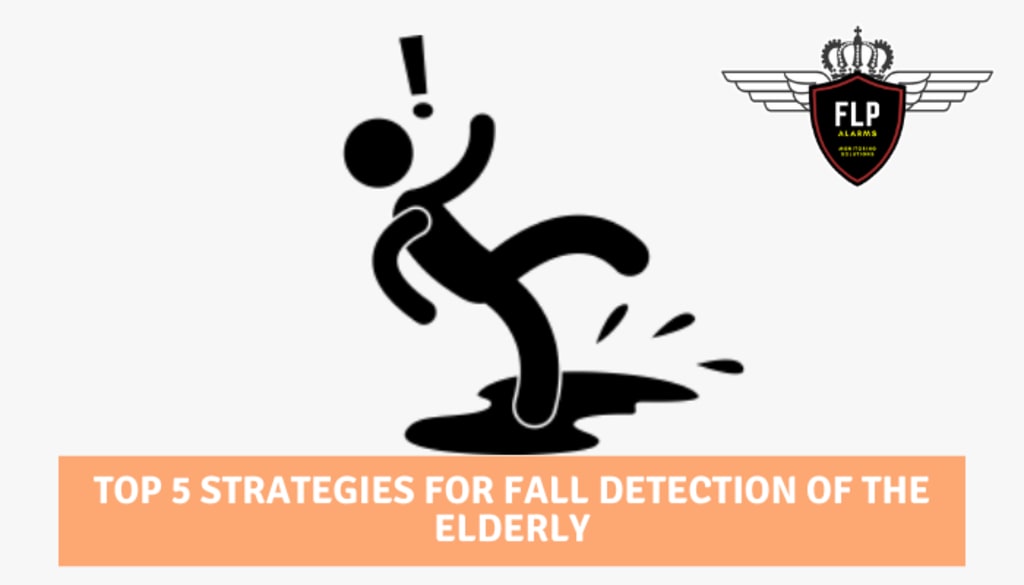Top 5 Strategies for Fall Detection of the Elderly
Falls are the second leading source of sudden or unintended injury deaths worldwide, according to the World Health Organization. Every year, 37.3 million falls are serious enough to necessitate medical treatment. Environmental risks, sickness, neurological and psychiatric disorders, muscle fatigue, blurred vision, and medicine, to name a few, all lead to fall risk. However, one thing is certain: the fall monitoring for seniors only increases with time, and the CDC predicts that one of every three older adults falls per year. That means you or someone close to you has already sustained a serious fall injury, according to statistics.

The elderly population, along with increasing healthcare prices, has prompted new experiments and technology to aid in the detection and even prevention of declines in high-risk people. Let's take a look at 5 fall detection patterns and challenges.
1. Physical monitoring
It is not unusual for healthcare providers to make rounds to physically check on aging patients and tenants. However, it is worth noting that it is still used in hospitals, senior living homes, and home care.
The degree to which caregivers are physically present varies according to the fall risk, ranging from weekly home visits to round-the-clock "patient watch." In terms of goals and considerations, it is a tradeoff. Although increased physical presence allows for quicker fall detection and potential fall avoidance, it is highly labor consuming and invasive for those being observed. Sporadic physical appointments, on the other hand, involve leaving a critically wounded person on the floor for hours or even days before elderly fall detection is discovered.
Many studies have also shown a connection between disturbed sleep and a rise in risk factors for falls, such as dementia. As a result, disrupting an elderly person's sleep to physically verify if they are healthy in bed can be counter-productive.
2. Wearable fall detectors
Wearable dropping detectors are among the most innovative analytical solutions on the market, using advanced analytics and a mix of tri-axial accelerometer and gyroscope technology. Simply placed, dispersed body wearing sensors track the user's gait and orientation, sounding or sending a warning if a sophisticated algorithm detects motion that resembles a crash.
Pendants, watches, eyeglasses, waist-worn ties, and different variations thereof are all available on the market. All are intended to immediately warn emergency responders if the person becomes incapacitated as a result of a fall monitoring for seniors. And the majority of them perform fairly well. Some also prompt the person to change his or her pose in order to avoid falling in the first place.
However, as with any wearable, there is no certainty that it will be worn. In reality, elderly users sometimes fail to wear their sensors. Or they refuse to wear their sensors. Or wearing their sensors is impractical, such as while showering, where the chance of falling is high.
Body-worn sensors are often vulnerable to false alerts, as even the most complex algorithms have trouble separating a fall from an abrupt sit-down or a hand swatting a fly.
3. Intelligent home monitoring systems
Another intriguing AI-based approach for elderly surveillance captures and analyzes the use of home appliances attached to a wireless mesh home automation device. The machine, which is programmed to "read" the normal use of home appliances, detects any uncommon appliance use and sounds an alarm.
To be sure, an alarm dependent purely on whether or not grandma had her morning coffee on time does not always mean a serious crash. However, the missing coffee, when combined with other irregularities, can. And, if Grandma takes a serious fall before going to bed, she could be on the floor for several hours before the home automation solution senses any anomalies in her daily routine.
So, while this may not be the first option for elderly fall detection methods, it does offer a strong layer of stability as well as an added advantage from an already existing home automation system.
4. Pressure & motion sensors
In hospitals and elderly care homes, a mixture of motion and pressure sensors mounted on beds, tables, toilet seats, or floors alert nurses to the movement of elderly patients and occupants. Many of these sensors can also sound an audible warning or play a pre-recorded message to alert the user to stay where they are before help arrives.
Although these sensors sense patient or resident movement reliably, not all movement is predictive of a fall. In reality, even small repositioning of the user will result in a false alarm.
5. Video surveillance
The use of video monitoring to track the elderly – whether in clinics, senior care centers, or increasingly at home – is a hot subject. It is possible to achieve the same degree of fall detection efficiency as with the previously mentioned approaches using video analytics ranging from simple cross-line detection to more sophisticated acceleration and positioning algorithms.
The primary benefit of video monitoring technology for elderly fall detection is that first responders can physically validate warnings remotely and quickly. From the standpoint of resource planning, this ensures that a single person can accurately track hundreds or even thousands of people, dispatching first responders only when a fall is reported. It offers peace of mind without causing any disruption to those being watched.
However, video monitoring has other drawbacks, most of which are related to image detail and lighting issues, which have an effect on the effectiveness of fall detection. And, perhaps, the most contentious part of video monitoring – computer security and patient safety.
However, with the advent of more inexpensive high-resolution thermal technology, healthcare professionals can easily picture an individual's location and status – even in complete darkness. Furthermore, thermal imaging preserves patient safety entirely in advance of the proposed GDPR regulations.
About the Creator
Amit Kr
Hi I am Amit Kr from India. I love writing on various topics. I love nature, music, pets and weekend traveling.






Comments
There are no comments for this story
Be the first to respond and start the conversation.